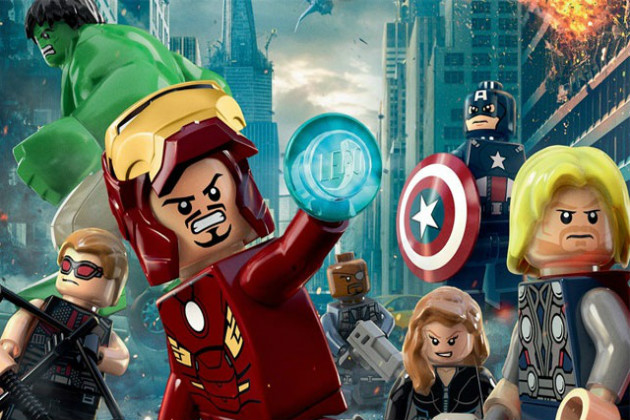“Make Love Not WarCraft” & Celebrity Marketing
- In 2006, Blizzard Entertainment gave the green light to South Park to create an episode using Blizzard’s “Warcraft” as the major plot driving aspect of the episode.
- The episode “Make Love Not WarCraft” won an Emmy for South Park, and when South Park released its season 10 on DVD it had a free pass to play World of WarCraft, which was a great marketing strategy.
- With a wide range of players in the World of WarCraft, Blizzard used celebrities that consumers from multiple generations could relate to.
Conclusions:
- It was a major risk for Blizzard to co-brand Warcraft with South Park, but there was a history of success for others that did the same. Just one year earlier Sony allowed South Park to use its PSP hand held console in the 4th episode of its 9th season. The episode was the first to ever win an Emmy for South Park. It might have been a gamble, but Blizzard used this past example to promote its brand and boost its sales.
- By using a diverse group of celebrities for its advertising campaign Blizzard has efficiently delivered it marketing message to it’s wide ranged demographic.
2K Sports: Sole Control of the Virtual Basketball Market
- 2K sports made its mark in the video game industry with quality designs and solid business practices. The quality of product for it’s NBA 2K franchise has pushed other competitors completely out of the market place in the last year.
- The recent title “NBA 2K13” also signed on Jay-Z, as the games producer, who set out to branch out from the genres usual Hip-Hop soundtracks.
- Jay-Z’s star power also helped convince past NBA legends like Charles Barkley to license their own likenesses for less money so 2K sports could afford to pay each member of 92’ Dream Team & even more NBA legends.
Conclusions:
- With quality designs and a spare no expense physics engine 2K sports is now experiencing the profits that come with sole control of the virtual basketball marketplace.
- With record profits this year and the #6 top spot for sales in 2012, it seems like 2K sports has the perfect recipe for success. It will be interesting to see what the future holds for this rising industry leader.
Video Games: Cultural Impact that Surpasses the Movies
- The popular and successful video games that have been made over the years are based on the classic hero story arc from our movies and literature.
- Opening weekend sales of big game titles tower over sales of even the biggest box office movies.
- Movies are not interactive like games are because of this games have a broader spectrum of experience that the end consumer is able to enjoy.
- Giving users all these choices satisfies a number of needs in Maslow’s “Hierarchy of Needs.”
Conclusions:
- With profits that can’t be ignored, big game titles have dwarfed the revenue stream of big box office movies in recent years.
- Also with story arcs in games giving users a wide range decision-making process based on our own “Hierarchy of Needs”, games have increased the experiences that the users are immerged in creating cultural impact that movies can’t compete with. It will be interesting to see if this shift in cultural impact remains in future years.
Feminism & The Video Game Industry:
- Doritos recent survey shows that women play video games just as much as men do. With the wide range of platforms that games are being played on these days the percent of women playing video games has grown to 49%.
- The past story arcs from popular game titles usually place women in a helpless position i.e. the damsel in distress. With most of the strong character traits given to the male characters. It is only recently that the industry is starting to see the error in its ways.
- Over sexualized female characters are not only threats to women, but also to younger males who are being exposed to them.
Conclusions:
- Companies like Crystal Dynamics have addressed the past errors of the Tomb Raider franchise and rebuild the Lara Croft character turning her into a role model rather than a sex symbol marketed to young men. With character like the new Lara Croft female gamers now have a building block to the start of more positive female heroes in game title.
- More positive female character could also lead to growth for certain companies that could begin marketing games more towards women. Positive female characters could also lead mothers, the gatekeepers of the household, to be more willing to buy certain titles because of the positive messages their children would receive from them.
LEGO: Success Made Simple
- LEGO was in major financial trouble in the early 2000s, despite being a top-10 toy producer in the world.
- Some thought it was the diversified business practices and side businesses that LEGO had, but in fact it was a near ancient supply chain system where LEGO was losing its money.
- LEGO has since recovered with a revamp supply chain and positive co-branded products, like their LEGO Batman and LEGO Star wars licensed products.
Conclusions:
- With solid product release tactics LEGO has benefited from its co-branded products like it’s LEGO Batman, which released right after box office giant “The Dark Knight Rises”.
- By aligning themselves with classic brands like Marvel comics, I predict LEGO will continue a successful summer financial run with LEGO Marvel Super Heroes being released right in the middle of multiple Marvel Studios movie titles being released at the box office.


















Recent Comments